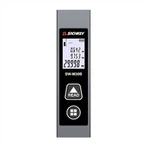Common 4 types of electric soldering irons
1. External heating electric soldering iron
Composed of a soldering iron head, soldering iron core, shell, wooden handle, power lead, plug, and other parts. Due to the installation of the soldering iron head inside the soldering iron core, it is called an externally heated electric soldering iron. The soldering iron core is a key component of an electric soldering iron. It is composed of parallel winding of electric heating wires on a hollow ceramic tube, with a mica sheet insulation in the middle, and two wires connected to a 220V AC power supply.
There are many specifications for externally heated electric soldering irons, commonly used ones include 25W, 45W, 75W, 100W, etc. The higher the power, the higher the temperature of the soldering iron head. The power specifications of soldering iron cores vary, and their internal resistance also varies. The resistance value of a 25W soldering iron is about 2k Ω, a 45W soldering iron is about 1k Ω, a 75W soldering iron is about 0.6k Ω, and a 100W soldering iron is about 0.5k Ω.
The soldering iron head is made of copper material, and its function is to store and conduct heat. Its temperature must be much higher than the temperature of the welding. The temperature of a soldering iron is related to the volume, shape, length, and other factors of the soldering iron tip. When the volume of the soldering iron head is relatively large, the holding time is longer. In addition, to meet the requirements of different welding materials, the shape of the soldering iron head may vary, commonly including conical, chisel shaped, and circular bevel shaped.
2. Internally heated electric soldering iron
Composed of a handle, connecting rod, spring clip, soldering iron core, and soldering iron head. Due to the installation of the soldering iron core inside the soldering iron head, it generates heat quickly and has a high heat utilization rate, hence it is called an internally heated electric soldering iron. The commonly used specifications for internal heating electric soldering irons are 20W and 50W. Due to its high thermal efficiency, a 20W internal heating electric soldering iron is equivalent to around 40W external heating electric soldering iron.
The rear end of the internally heated electric soldering iron is hollow, used to fit onto the connecting rod and fixed with a spring clip. When replacing the soldering iron head, the spring clip must be removed first, and at the same time, the front end of the soldering iron head must be clamped with pliers and slowly pulled out. Remember not to use too much force to avoid damaging the connecting rod.
3. Thermostatic soldering iron
Due to the presence of a temperature controller with a magnet inside the constant temperature electric soldering iron head, the temperature control is achieved by controlling the power on time. When the electric soldering iron is powered on, the temperature of the soldering iron rises. When the predetermined temperature is reached, the magnetism disappears due to the strong magnetic sensor reaching the Curie point, causing the magnetic core contact to disconnect, and at this point, the power supply to the electric soldering iron stops; When the temperature is lower than the Curie point of the strong magnet sensor, the strong magnet regains its magnetism and attracts the permanent magnet in the magnetic core switch, making the contact of the control switch open and continuing to supply power to the soldering iron. By repeating this cycle, the goal of temperature control is achieved.
4. Tin absorbing soldering iron
Tin suction soldering iron is a soldering tool that integrates a piston type solder suction device with an electric soldering iron. It has the characteristics of convenient use, flexibility, and wide applicability. The drawback of this type of tin absorbing soldering iron is that it can only remove one solder point at a time.






